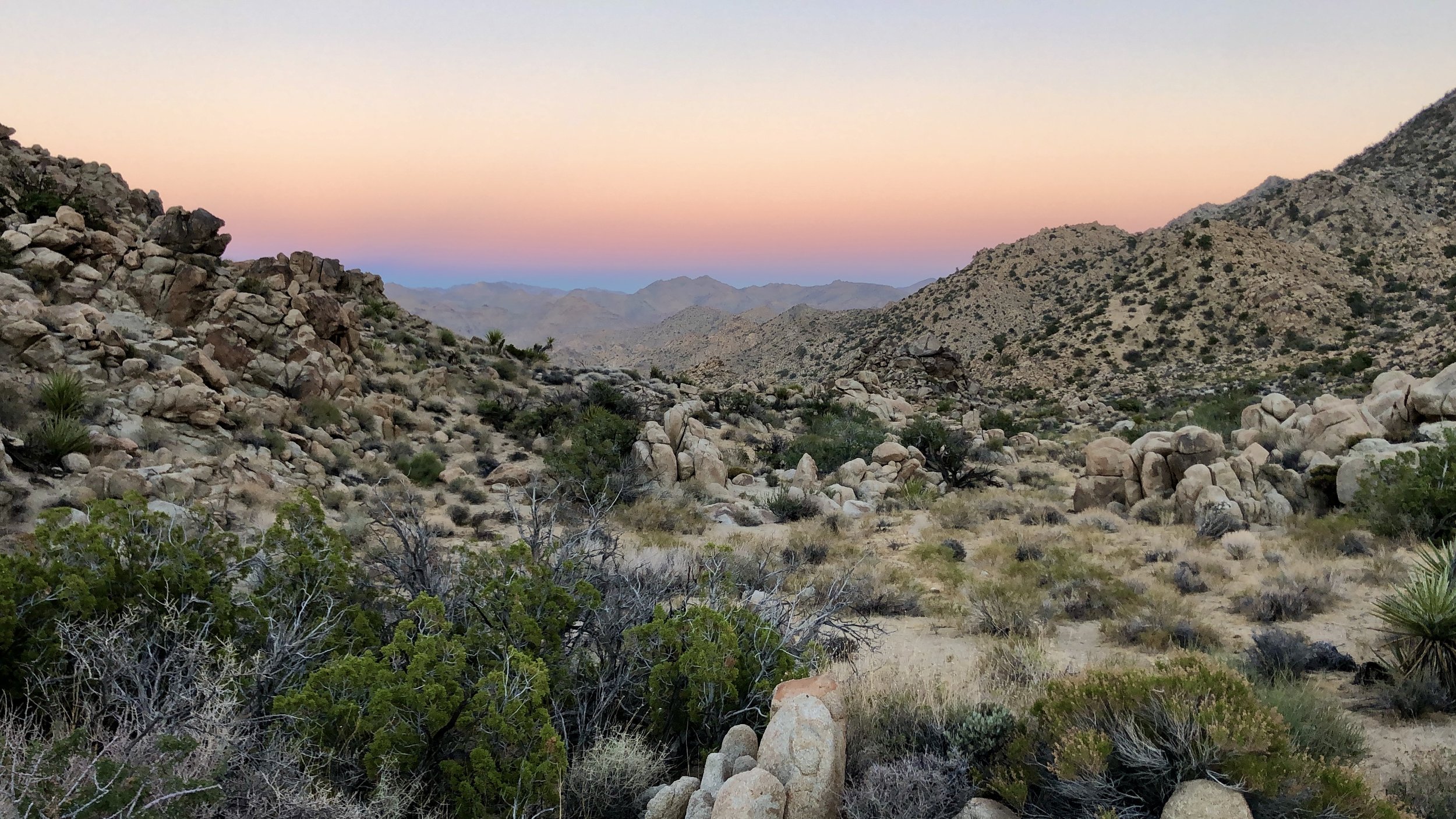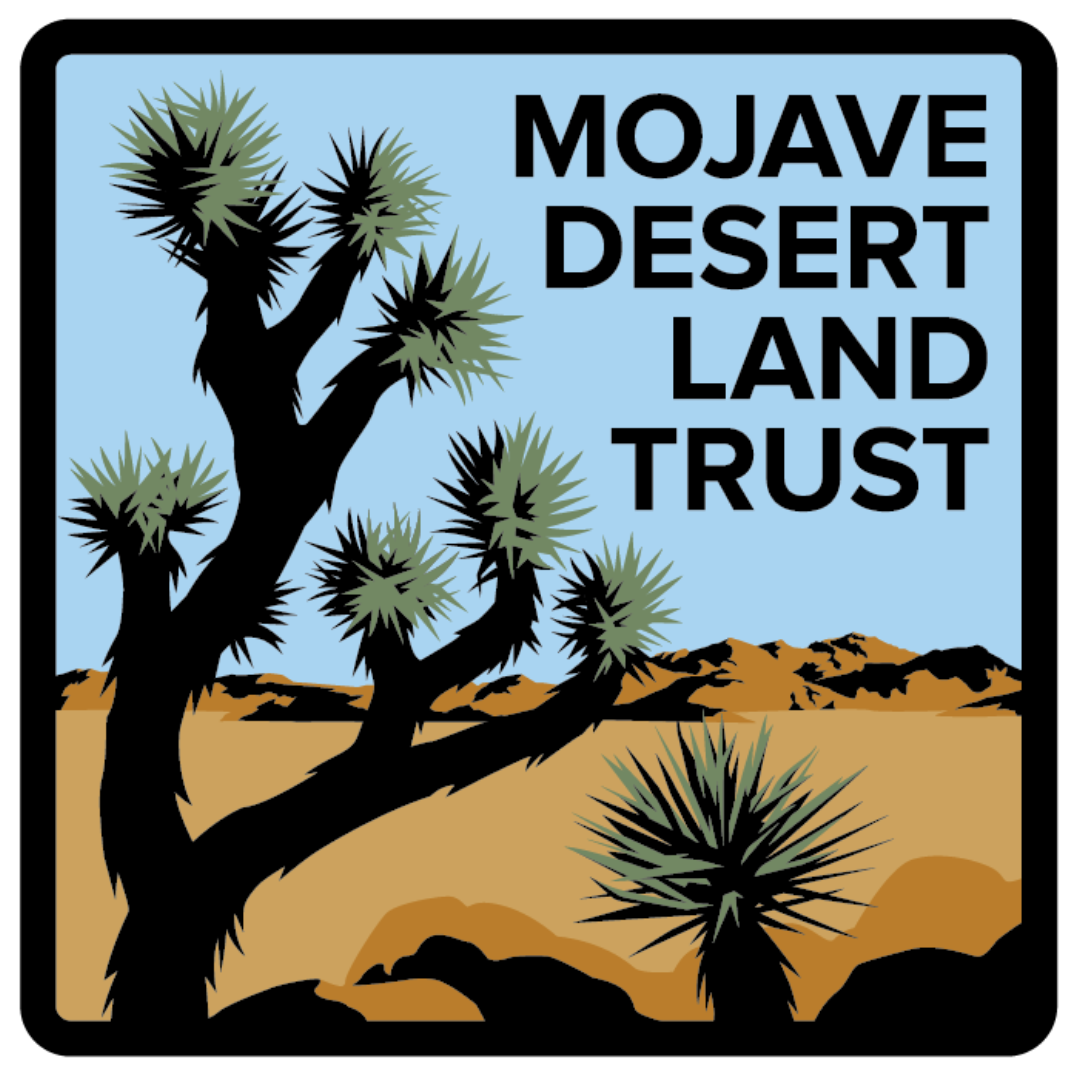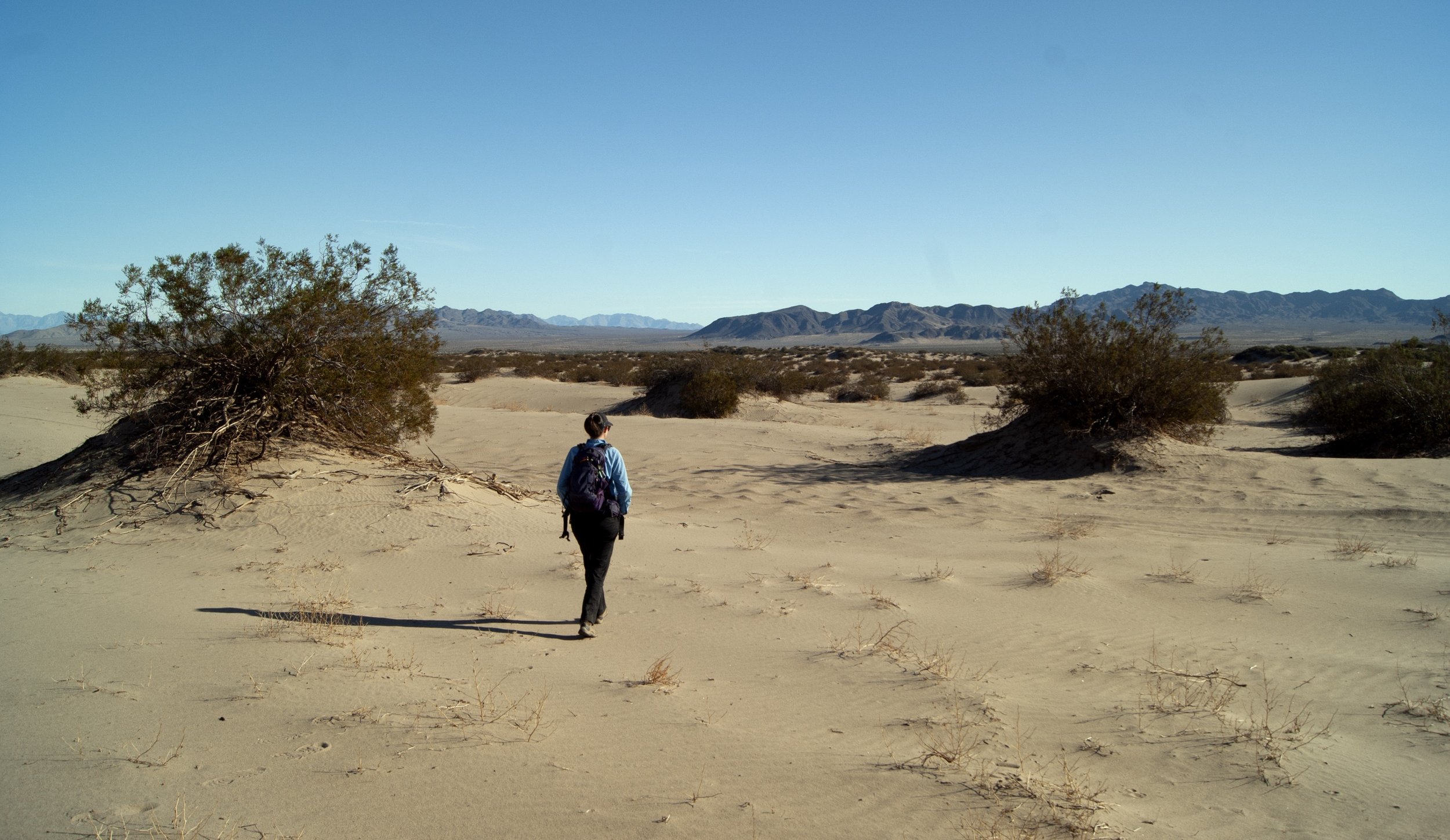
The mission of the Mojave Desert Land Trust is to protect the Colorado and Mojave Desert ecosystems, the relics of its history, and its stunning scenery. Before you visit, explore the links below to learn how to recreate responsibly in this rich and varied landscape.
Know before you go
-
Don’t assume you can find drinks on your trip! One gallon of water per person, per day is the absolute minimum that should be carried.
-
Always tell someone where you are going and when you plan to return. In the event that you don’t make it home when you thought you would, they will know to be on the lookout. The more information you share, the more this person will be able to help if you get lost.
-
Fill up when you pass a station, even if you still have plenty of fuel. It may be a long distance to the next open station.
-
In summer, layered clothing slows dehydration and minimizes exposure. Good hiking shoes, loose fitting natural-fiber clothing, a wide brimmed hat, sunglasses and sunscreen are a must.
In winter, temperatures can often drop below freezing with icy winds. Bring extra warm clothing.
-
Flash floods may occur any time thunderheads are in sight. Weather can change in the desert quite rapidly. Don’t stick around in dry washes (arroyos) which can flood suddenly.
-
Cellphone reception can be spotty to nonexistent. Don’t rely on the internet to help you navigate. Ideally, you should also carry an up-to-date printed map of the area before exploring by foot or vehicle in case your phone gets lost, broken, or dies. USGS topographic maps show land contours and specific features.
-
If an incident occurs on a remote road, it can be a long time until help arrives.
-
Two-wheel drive vehicles are generally ok, but 4WD can be required. Check current conditions of dirt roads before venturing to a remote location. Roads may become impassable in bad weather or from past storms. Be safe and drive with care.
-
Be prepared! Have adequate first aid supplies, including enough medication for anyone who requires it.
-
Water, sunscreen, a shade hat and sturdy walking shoes are a few of the obvious items. Download our handy Desert Pack List to make sure you don’t forget anything important!
-
Read more about desert safety basics.
About three million people visit Joshua Tree National Park each year, and it’s the eighth-most visited U.S. national park overall. If you’re one of the many curious explorers coming to Joshua Tree this season, it’s smart to first familiarize yourself with the sensitive desert landscape.
Visiting Joshua Tree
More resources
TreadLightly.org
Download Tread Lightly guidelines here.
Jawbone.org
Maps for our region are available in their online store.
Leave No Trace
Access guidelines for responsible recreation here.
Reading the Landscape
Access detailed information on how to responsibly create art in a delicate desert environment here.
OHV.parks.ca.gov
California State Parks Off-Highway Motor Vehicle Recreation (OHMVR) Division promotes safe, responsible OHV operation.
San Bernardino County Sheriff’s Non-Emergency Dispatch, Desert: (760) 956-5001
Thank you to Extreme Terrain for supporting MDLT’s responsible recreation efforts!



